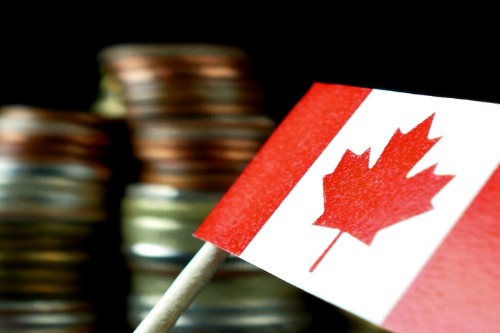

In 2020, the Canadian economy contracted by 5.4%, driven primarily by a decline in commodity prices and the economic shutdown triggered by the COVID-19 pandemic, which heavily impacted domestic demand and spending.
The main economic contraction occurred in the first two quarters of 2020, when uncertainty around COVID-19 was at its peak and the country was under its strictest pandemic lockdowns. However, the economy “really did come roaring back” in the third quarter of 2020, according to Ann Modica, senior financial analyst at AM Best, as there was a reduction in lockdown measures and increased government stimulus spending fuelled economic growth.
“Economic growth did continue but at a more moderate pace through 2020 and into the first quarter of 2021,” Modica added. “However, second quarter 2021 gross domestic product (GDP) really surprised a lot of people when it contracted unexpectedly by 1.1%. Analysts had expected it to grow by 2.5%, so that’s quite a mess. This has raised some questions about the strength and the recovery [of the economy], and the likelihood that we’re going to experience some bumps in the road of recovery for the Canadian economy.”
Canadian insurers felt the impact of the economic contraction. Insurers want a healthy economy with a strong GDP because this is most likely to produce positive investment yields. As most insurers make their money investing their premiums into dividend-paying stocks, mortgage-backed securities, real estate, and financial institutions – all of which are vulnerable to economic changes – any contraction in the economy can diminish investment returns, and force insurers to save costs elsewhere.
There has been a sustained low interest rate environment globally, which is one of the leading causes of market hardening in commercial insurance, and any local recessions due to the pandemic only exacerbated existing trends. For the past few years, insurers have been raising rates, increasing deductibles, introducing sub limits, and reducing capacity in challenged lines of business in order to try and improve their combined ratios.
However, while the Canadian economy did contract in 2020, the impacts of the COVID-19 pandemic weren’t all bad for the insurance industry. The widespread lockdowns ordered to prevent transmission of COVID-19 resulted in a decrease of certain types of claims – for example, in personal auto and commercial general liability – due to people staying at home, and so insurers did save some money on claims.
The Canadian government was quick to implement extraordinary measures with regards to both fiscal and monetary policy to help support the economy through the crisis, according to Modica. The Bank of Canada reduced it policy rate by a total of 150 basis points in March 2020, at the start of the pandemic, to its current rate of 0.25%. The bank also implemented numerous asset purchases to help provide liquidity to the financial markets.
“The government also implemented various fiscal stimulus measures to provide a safety net to those impacted by the pandemic, and total government programs amounted to approximately 20% of GDP,” said Modica. “Much of that support - over 13% of GDP – was provided through direct support to households and firms, and a lot of this included wage subsidies and payments to workers without sick leave or access to employment insurance.”
At its height, the unemployment rate in Canada skyrocketed to about 14% in May of 2020, when approximately one-third of the labour force lost their jobs or faced a substantial reduction in the hours worked. From an insurance standpoint, this meant fewer insureds, and the potential for a significant uptick in employment liability claims revolving around discrimination or unfair dismissals. Luckily, that trend has not come into fruition, but given the long-tail nature of casualty lines, there is the potential for employment-related lawsuits down the road.
“While the unemployment rate has come down pretty significantly – it’s currently at 7.5% - it’s still above the pre-pandemic level where it hovered at around 6%,” Modica commented. “The falling unemployment rate has increased consumer confidence, as have the country’s high vaccination rates. Canada’s per capita vaccination rate is now one of the highest in the world. Strong consumer confidence and a relatively high rate of savings does bode well for domestic demand, savings, and spending going forward.
“However, we have seen consumer sentiment come down slightly in August 2021, and I think this is likely due to a couple of things. I think first, the uncertainty surrounding the Delta variant, which is causing an uptick in cases and hospitalizations, is causing some reduction in confidence. Provinces and businesses have already responded to the threat with a number of new policies, which have the potential to negatively impact consumer confidence.”
Moving on, all businesses – including insurers - have their eyes on Canada’s inflation rate, which has been running higher than the Bank of Canada’s preferred target range of 1-3%. Speaking at AM Best’s Canada Insurance Market briefing, Modica explained this is largely due to “base effects and shortages in certain goods and services”.
“While it’s expected prices will run above trend in the near term, it’s largely believed that price increases will be transitory in nature,” she explained. “However, there is significant uncertainty surrounding this assumption. With regards to the implications for monetary policy, the Bank of Canada has reiterated their guidance that it won’t raise its policy rate until the recovery is complete. And based upon the bank’s forecasts, as well as weaker than expected second quarter GDP growth, it suggests that interest rates won’t rise until sometime in 2022.”
